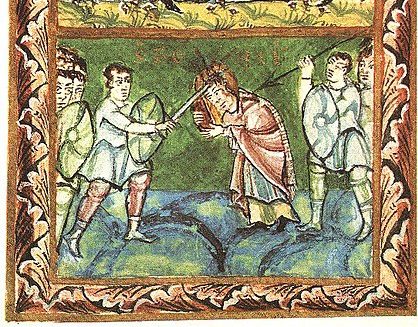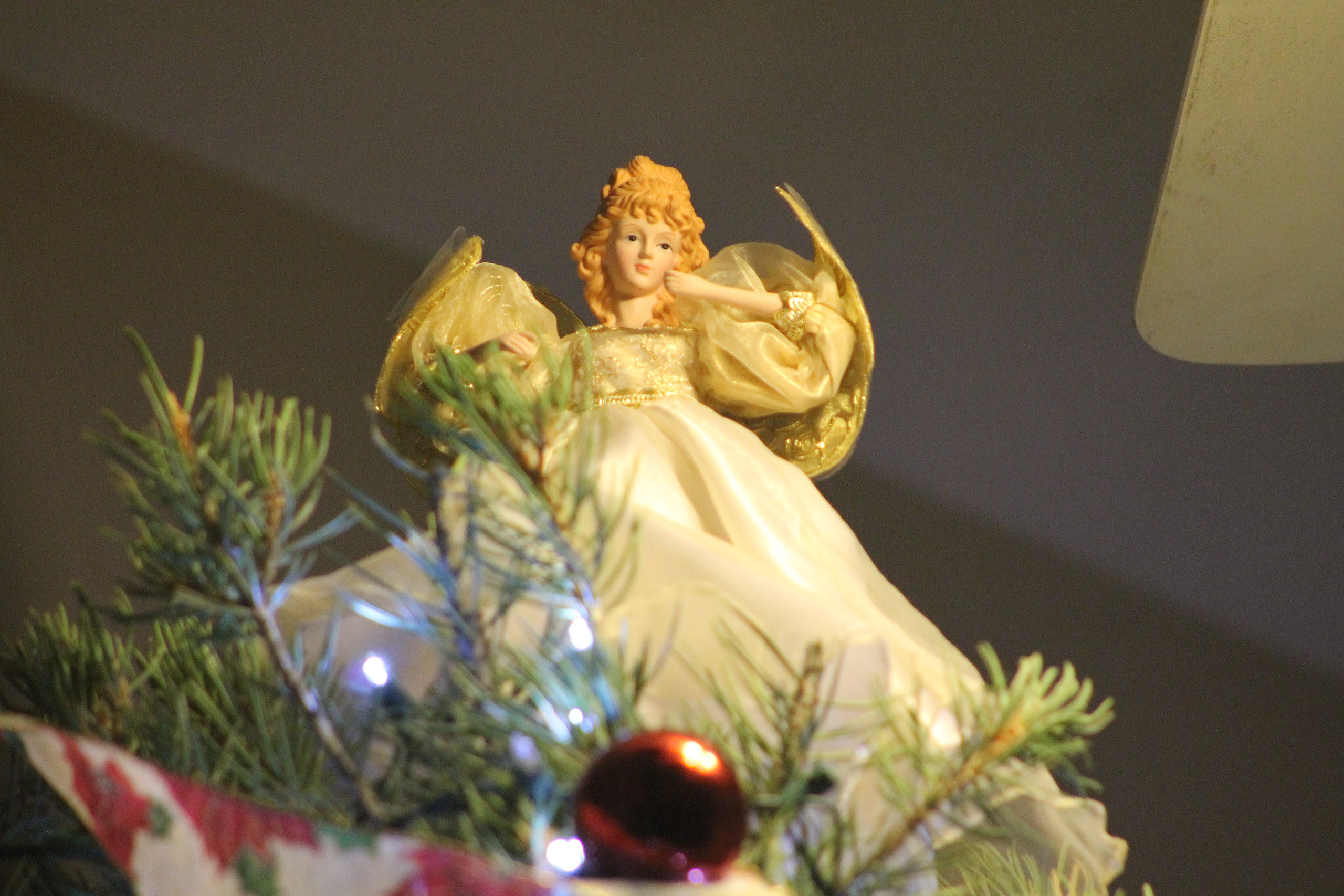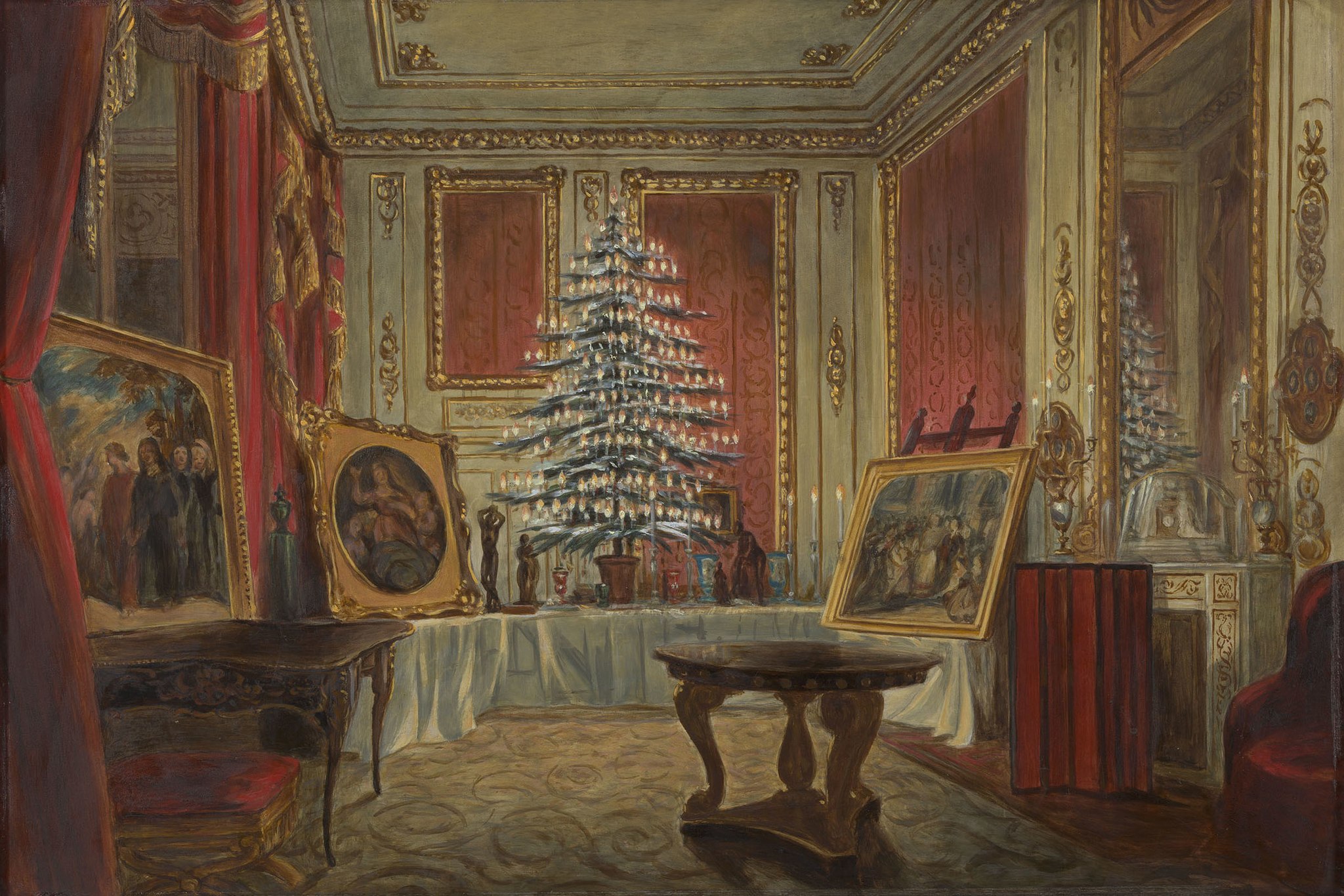By Sellainne Cathry, Vision Times UK Staff
Since ancient times, many cultures have seen trees as sacred and revered them as symbolic representations of life, the universe, our place within, and our connection to the heavens.
Stories of cultures gathered throughout the centuries, both Christian and non Christian, show that trees played and continue to play an important part in traditional celebrations.
The story of the Christmas tree and how it came to be, traces back to the 8th century. Historical documentation and legends tell of the first affirmed Christmas tree to be associated with the Christian religion owe to the act of Saint Boniface.

Saint Boniface (675–754)
Saint Boniface, whose birth name was Wynfreth, was an English Benedictine monk who travelled to Germany late in life to spread Christianity. During his mission, he encountered many challenges but succeeded in converting Germanic pagan tribes of the Frankish empire to the Christian faith. Boniface then travelled to Rome and met with Pope Gregory II.
Success
You are now signed up for our newsletter
Success
Check your email to complete sign up
Upon his return to Germany in 723, whilst travelling through Geismar, he was dismayed that the community there had reverted to their old pagan customs. In preparation for the Winter solstice, they were about to sacrifice a young boy at an oak tree dedicated to Thor, son of Odin.
Boniface, disgusted and enraged to see the life of an innocent young boy about to be taken, took up an axe and struck the mighty oak tree. The tree came down effortlessly, splitting into four as it fell.
The people looked on in awe, recognising God’s hand, and seeing that Thor had not struck Boniface down, they asked the Saint what they should do to mark the solstice and celebrate Christmas.
Boniface pointed to a nearby fir tree that had miraculously remained unscathed from the fallen oak and told them to revere that as their Holy tree. He said that the evergreen leaves represented peace and immortality, and the tree represented the Kingdom of God as its conical shape pointed up to the heavens.
It is said that Saint Boniface then hung apples on the tree to represent the Garden of Eden and placed lighted candles on it to represent the light of God. The Saint was accorded the name Saint Boniface on 5 May 719, which means “He who does good.”

‘Paradise trees’
News soon spread throughout the land, and the tree became known as the “Paradise tree.” By the middle ages, “Paradise trees” had become part of the Christian rites in Germany, and at Christmas time, people hung apples on them to celebrate 24 December, which was known as the “Feast Day of Adam and Eve.” People also hung wafers on them, symbolizing the Christian sign of redemption and candles representing Christ and the light of God.
In emulation of the Paradise trees, people would often create pyramid structures made of wood with shelves to hold small figurines and candles. They would dress the structures with evergreen leaves and place a star at the top representing the Star of Bethlehem that guided the three wise men to the birthplace of Jesus.
People also made angels and placed an angel on the top of the structure to depict the angel Gabriel that told the shepherds of the birth of Jesus. The wooden structures known as Christmas pyramids were moveable and often used in plays telling the story of Saint Boniface and the oak tree and bible stories to those who couldn’t read. Over the following years, the adornment of the Christmas pyramids transferred to the Paradise tree, and the Christmas pyramids and The Paradise tree merged to become the Christmas tree.
The first historically recorded Christmas tree was in 1419 and decorated with apples, treats, and gingerbread cookies baked in various shapes. It was erected by the Fraternity of Baker’s Apprentices of Freiburg in Germany.
The first time a Christmas tree was brought inside the home was allegedly by Martin Luther (1483–1546) — not to be confused with Martin Luther King.

The Story of Martin Luther and the Christmas tree
Martin Luther was a German priest, theologian, hymn writer, professor and author. He is also known as the catalyst of the 16th-century Protestant reformation.
The story goes that one winter’s night in 1536, Martin Luther was walking through a pine forest near his home in Wittenberg when he gazed up at the sky and became enamoured by the sight of thousands of stars glinting like jewels twinkling through the branches of the trees.
He was so in awe that he took back a tree from the forest, took it into his house and dressed it with lighted candles. He told his family of his experience in the woods and said the tree twinkling with candlelight was a reminder of the starry heavens from whence Jesus, their saviour came.
Some say the legend of Martin Luther is a folktale passed down through the ages throughout the generations. Others say there is no validity to the tale, although it is a beautiful story.
By 1605 Christmas trees had become very popular in Germany. An anonymous writing from that year is documented as reading. “At Christmas they set up fir trees in the parlours at Strasbourg and hung thereon roses cut out of many coloured paper, apples, wafers, gold foil, sweets etc.”

The first Christmas tree in the UK
Queen Charlotte, the German wife of King George III, is recorded as the first in the UK to set up a Christmas tree in the home. In 1800, Queen Charlotte planned to hold a large Christmas party for rich and noble families and their children. Contemplating a gift that would bring the children much delight, she set up a yew tree adorned with lighted candles, sweets, treats and tinsel in the centre of the drawing room.
Dr John Watkings, one of the Queen’s biographers who attended the party, wrote in his description of the event. “From the branches of which hung bunches of sweetmeats, almonds and raisins in paper, fruits and toys most tastefully arranged; the whole illuminated by wax candles…after the company had walked around and admired the tree, each child obtained a portion of the sweets it bore, together with a toy, and then all returned home quite delighted.”
Since then, Christmas trees have become hugely popular within the Aristocracy and the upper class circles, being the focal point at many children’s gatherings.
By Queen Charlotte’s death in 1818, the Christmas tree tradition had become hugely popular. However, it wasn’t until the 1840’s that British mainstream society became aware of the custom and adopted it, setting up a Christmas tree in their own homes.
In 1848 Queen Victoria and Prince Albert set up a Christmas tree at Windsor Castle. The occasion, alongside a drawing of the family gathered around a table upon which a Christmas tree stood, was published in the London News. The publication and the illustration of the British Royal Family’s Christmas tree helped to popularize the Christmas tree and its adornment, which by the 1850s had become established as part of the Christmas festive celebration.
READ ALSO:
- The Spirit of Advent
- Repurpose Your Christmas Tree
- The Legend of Tomten and a Craft to Make Him Yours.
- Potpourri – A Natural Holiday Craft
Because New England Puritans believed that decoration and festivities desecrated a sacred holiday, the Christmas tree was not popular in early American history. German settlers are believed to be the first to erect Christmas trees in their homes in the 1830s. Since then it has become a popular tradition among Americans, who spend more than one billion dollars each year on live trees.














